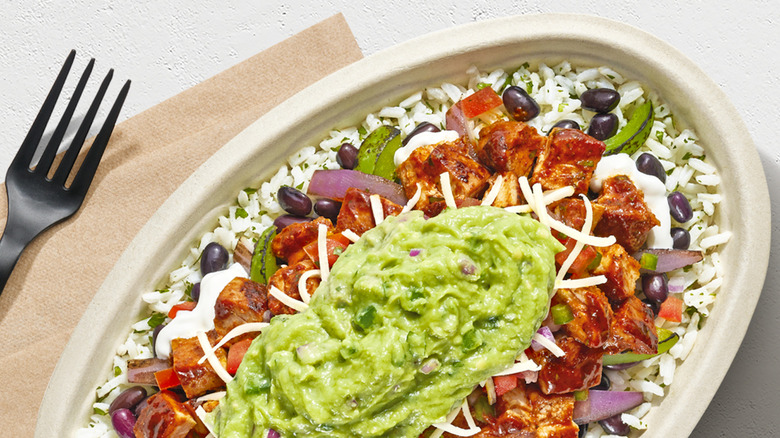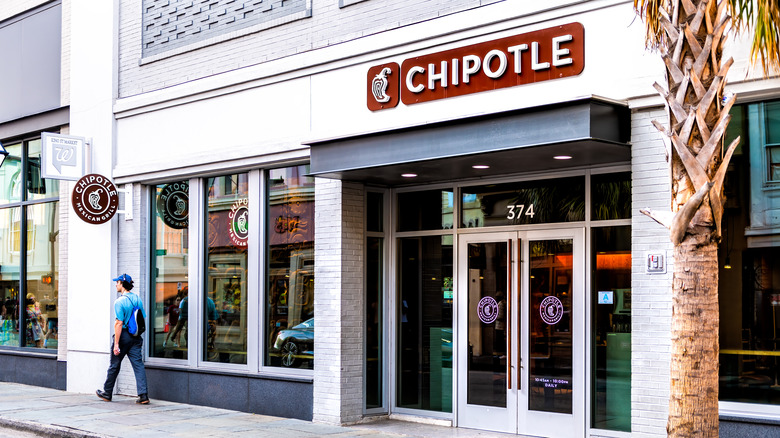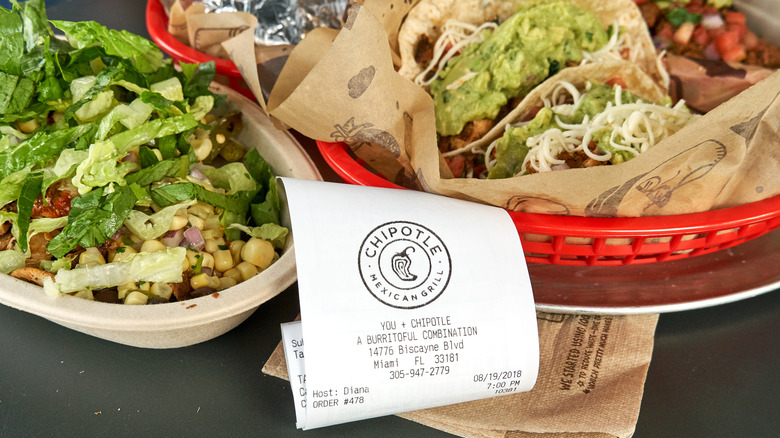Is Chipotle Considered Fast Food Or Is It Something Else Entirely?
Few restaurant chains have as loyal a following as Chipotle. It's not hard to see why; with a number of meal formats that can be loaded up with exactly the ingredients you want, it's easy to get food that's tailored to your tastes. The internet has gone as far as making shirts that say, "I know guac is extra," a reference to the additional price of the topping, and even ordering the restaurant's catering service for meal prep. But how exactly is this restaurant chain classified? It certainly isn't a full-service sit-down restaurant with servers, but fast food doesn't sound right either; it positions itself as more elevated than Taco Bell. As it turns out, Chipotle is in a different restaurant category: fast-casual.
Fast-casual eateries are positioned in between fast food and full-service restaurants. In a nutshell, they entail ordering at a counter, but the food and atmosphere are generally regarded as higher quality than fast food, which is reflected in the menu pricing. With Chipotle's focus on natural, quality ingredients, it certainly seems to fit this description.
What makes fast-casual restaurants attractive?
There doesn't seem to be one uniform description of what makes a restaurant fast-casual. However, there are some key points that are fairly consistent. In an interview with Franchise Times, Darren Tristano of Technomic, a consulting firm for the food service industry, listed a number of these attributes, including having higher pricing, catering to adult customers, having an elevated atmosphere, and ordering and paying at a counter. All of these are consistent with targeting customers who want a quick and convenient option that feels nicer than fast food — and who are willing to pay a little more to get it.
Some other examples of fast-casual restaurants include Panera Bread, Noodles & Company, Potbelly Sandwich Shop, Qdoba, Sweetgreen, and Cava. Given the growing consumer preferences for healthier food in recent years, there's undoubtedly a market for these types of restaurants, from busy office workers on lunch breaks to those who want a health-conscious dinner option on a budget. Therefore, it's no surprise brands like these are gaining popularity, with new chains popping up in recent years.
Chipotle may struggle with its fast-casual positioning
Because fast-casual restaurants are priced higher than their fast food competitors, their survival depends on customers' willingness to pay more to eat there. This will only continue if customers see greater value in their offerings than in fast food. Though Chipotle's advertising focuses heavily on the concept of real food without additives, the brand hasn't been free of negative publicity surrounding its ingredients, most notably due to an E. coli outbreak in 2015. Even as its image has recovered, the company has experienced other scandals, such as child labor violations.
An average entree with chicken at Chipotle costs less than $9; however, choosing more expensive meats, doubling the meat quantity, or choosing toppings that cost extra can hike up the price. Some customers have taken to Twitter to complain about the cost, notably confusing it for fast food. Without an elevated dining experience, Chipotle may, in fact, feel like a more expensive version of fast food. As noted in CNBC by Neil Saunders, managing director of GlobalData, "the dining-in experience in many branches of Chipotle is far from inspiring and, in some locations, the ambiance and layout actively discourages people from eating in." Those who've been to a busy Chipotle during the lunch rush can likely relate.


